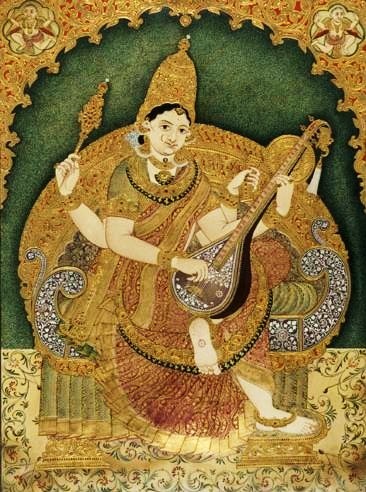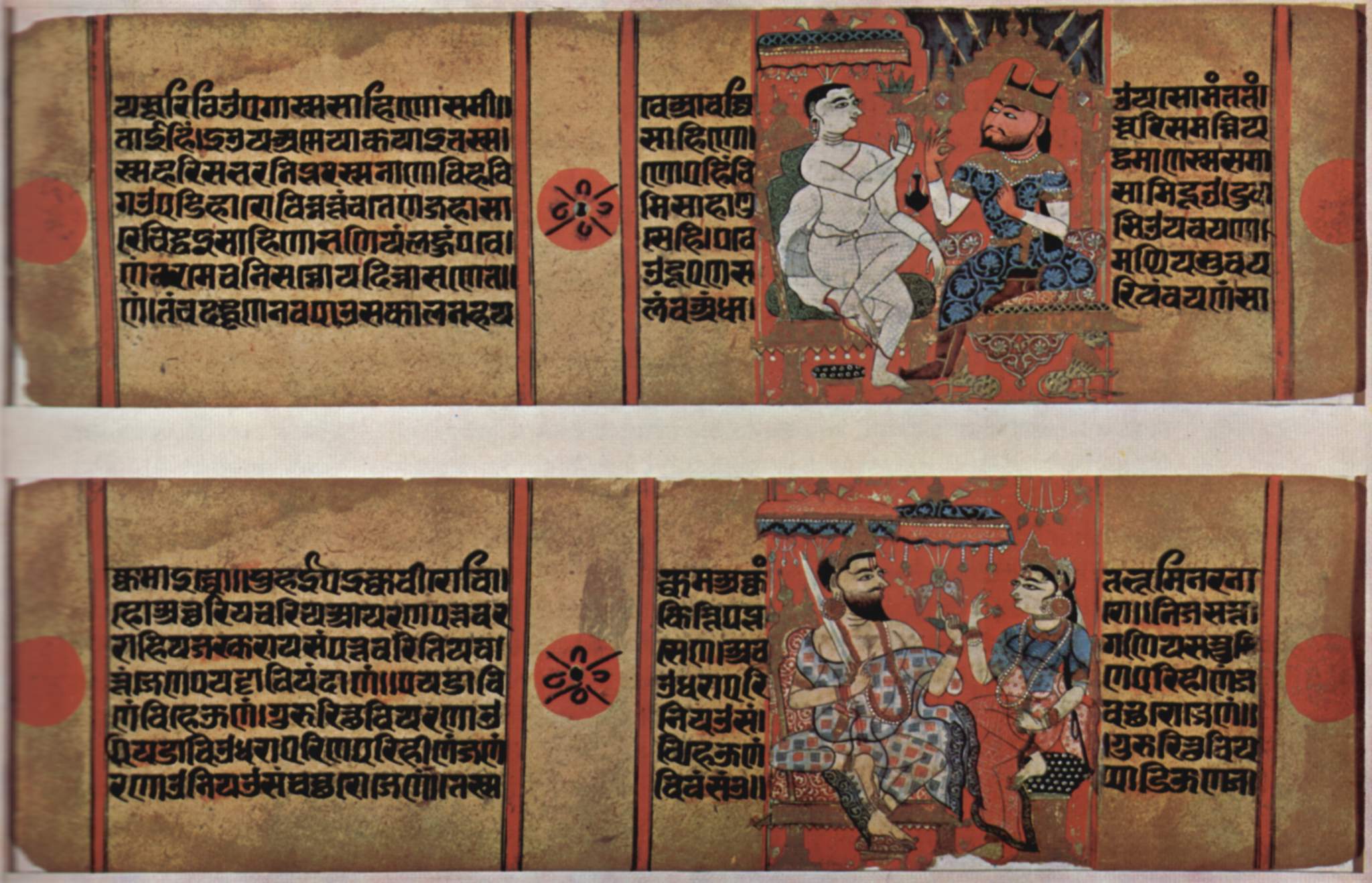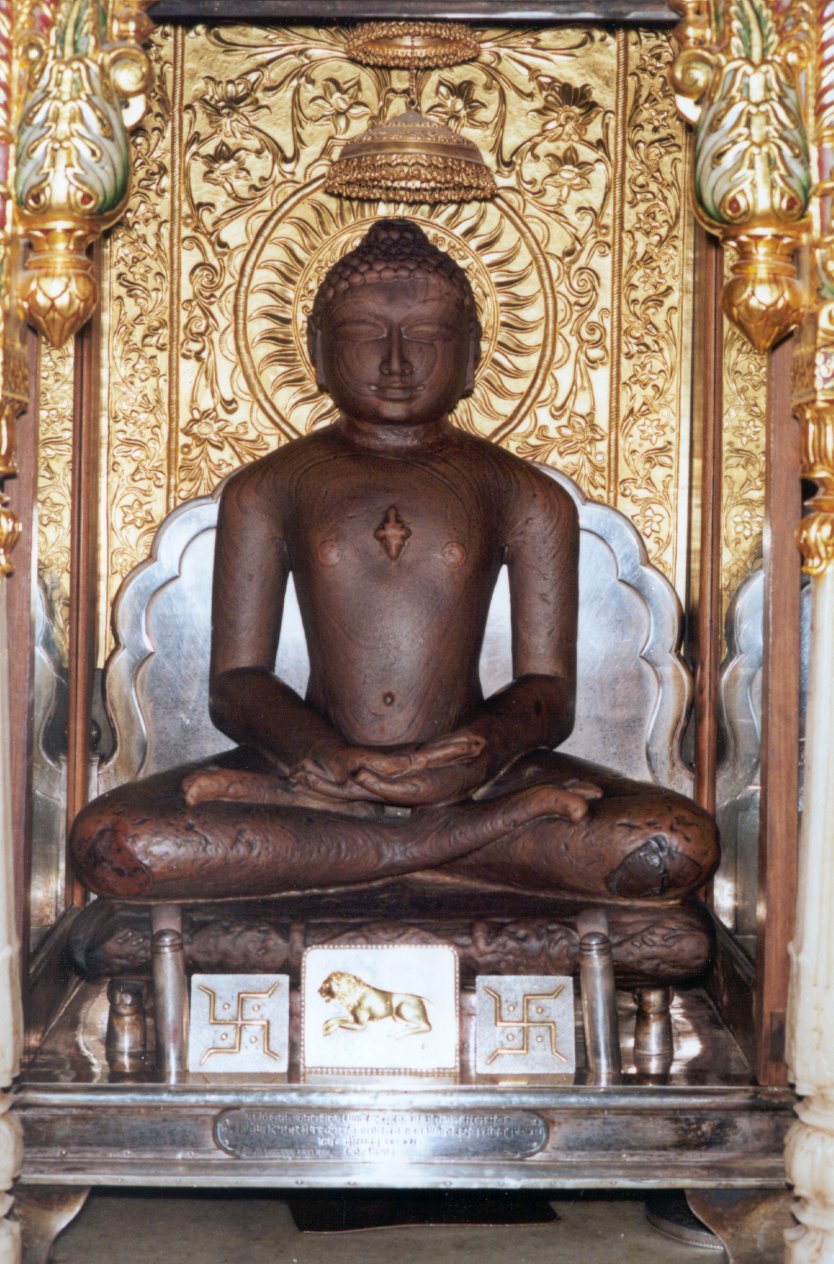|
Ladnu Jain Temple
Ladnu Jain temple is a Jain pilgrimage center located in Ladnu, Rajasthan. History Ladnu, established as a significant Jain center in the 10th century, features a temple complex comprising five Digambara and two Śvetāmbara temples, with their superstructure added during later centuries. The temple complex is home to Jain Vishva Bharati University, established in 1970, serving as a hub for the study of Jainism and spirituality. Ladnu also holds significance as the birthplace of Acharya Tulsi, a ninth spiritual leader of Śvetāmbara Terapanth tradition. Architecture The Shantinatha temple boasts an inscription dating back to 1295 CE (1352 VS) inscription carved on the pedestal of the (principal) idol. Additionally, the temple is adorned with an exquisitely carved idol of Sarasvati, dating back to 1162 CE. Noteworthy among the temple's architectural features is the intricately carved torana A ''torana'' (; '' awr-uh-nuh') is a free-standing ornamental or arched gat ... [...More Info...] [...Related Items...] OR: [Wikipedia] [Google] [Baidu] |
Jainism
Jainism ( ), also known as Jain Dharma, is an Indian religions, Indian religion whose three main pillars are nonviolence (), asceticism (), and a rejection of all simplistic and one-sided views of truth and reality (). Jainism traces its spiritual ideas and history through the succession of twenty-four , supreme preachers of ''dharma''. The first in the current time cycle is Rishabhadeva, who tradition holds lived millions of years ago; the 23rd is Parshvanatha, traditionally dated to the 9th century Common Era, BCE; and the 24th is Mahāvīra, Mahavira, who lived . Jainism is considered an eternal ''dharma'' with the guiding every time cycle of the Jain cosmology, cosmology. Central to understanding Jain philosophy is the concept of ''bhedavijñāna'', or the clear distinction in the nature of the soul and non-soul entities. This principle underscores the innate purity and potential for liberation within every Jīva (Jainism), soul, distinct from the physical and menta ... [...More Info...] [...Related Items...] OR: [Wikipedia] [Google] [Baidu] |
Acharya Tulsi
Acharya Tulsi (20 October 1914 – 23 June 1997) was a prominent Jain religious leader. He was the founder of the Anuvrata movement and the Jain Vishva Bharti Institute, Ladnun, and the author of over one hundred books. Acharya Mahapragya, Acharya Mahashraman and Sadhvipramukha Kanakprabha were his disciples. Biography Acharya Tulsi was born on 20 October 1914 in Ladnun, in present Nagaur district of Rajasthan, to Vadana and Jhumarmal Khater. Acharya Kalugani, then the leader of the Śvetāmbara Terapanth association, greatly influenced Tulsi. Tulsi was initiated into monkhood at age 11 in 1925. In 1936, Kalugani nominated Tulsi to be his successor in Gangapur at Rang Bhawan-the house of Ranglal Hiran, making him the ninth Acharya of the Terapanth Sangha. During his leadership of the Sangha, he initiated more than 776 monks and nuns. Scholarship In the 1970s, Acharya Tulsi began researching, compiling translations and commentaries on the Jain Agamas. Acharya Tulsi, along w ... [...More Info...] [...Related Items...] OR: [Wikipedia] [Google] [Baidu] |
Rajasthan Tourism Development Corporation
Rajasthan Tourism Development Corporation (RTDC) is an agency of the Government of Rajasthan set up on 1 April 1979 to develop tourism in the Indian state. It manages many restaurants, cafeterias, hotels and bars. The Corporation also organizes package tours, fairs, festivals, entertainment, shopping and transport services. In collaboration with Indian Railways it runs the luxury tourist train Palace on Wheels. RTDC has hotels/motels at all major tourist places in Rajasthan Rajasthan (; Literal translation, lit. 'Land of Kings') is a States and union territories of India, state in northwestern India. It covers or 10.4 per cent of India's total geographical area. It is the List of states and union territories of .... Hotels * hotal chambal Kota * hotal swagatham, Jaipur * hotel meenal, alwar * hotel khadim, ajmir * hotel shikhar, mount abu * hotel kajri, udaipur * hotel panihari,pali * hotel ghoomar, jodhpur References External links * Tourism in Rajasthan St ... [...More Info...] [...Related Items...] OR: [Wikipedia] [Google] [Baidu] |
University Of Toronto Press
The University of Toronto Press is a Canadian university press. Although it was founded in 1901, the press did not actually publish any books until 1911. The press originally printed only examination books and the university calendar. Its first scholarly book was a work by a classics professor at University College, Toronto. The press took control of the university bookstore in 1933. It employed a novel typesetting method to print issues of the ''Canadian Journal of Mathematics'', founded in 1949. The press has always had close ties with University of Toronto Libraries. The press was partially located in the library from 1910-1920. The University Librarian Hugh Hornby Langton, the lead librarian of the University of Toronto Libraries, served as the first general editor of the University of Toronto Press. Sidney Earle Smith, president of the University of Toronto in the late 1940s and 1950s, instituted a new governance arrangement for the press modelled on the governing structur ... [...More Info...] [...Related Items...] OR: [Wikipedia] [Google] [Baidu] |
Motilal Banarsidass
Motilal Banarsidass Publishing House (MLBD) is an Indian academic publishing house, founded in Delhi, India in 1903. It publishes and distributes serials, monographs, and scholarly publications on Asian religions, Buddhology, Indology, Eastern philosophy, history, culture, arts, architecture, archaeology, language, literature, linguistics, musicology, mysticism, yoga, tantra, occult, medicine, astronomy, and astrology. Amongst its publications are the 100 volumes of the Mahapuranas; the 50 volumes of the '' Sacred Books of the East'', edited by Max Müller; ''Bibliotheca Buddhica'' (30 volumes in 32 pts); Ramcharitmanas with Hindi and English translations; the Manusmriti in 10 volumes and the Sanskrit lexicon; and the 7 volumes of ''Encyclopedia of Indian Philosophies''. It also brings out books based on research and study conducted at organizations such as the Indian Council of Historical Research (ICHR), Indira Gandhi National Centre for the Arts (IGNCA), and Indian Cou ... [...More Info...] [...Related Items...] OR: [Wikipedia] [Google] [Baidu] |
Torana
A ''torana'' (; ''[tawr-uh-nuh]'') is a free-standing ornamental or arched gateway for ceremonial purposes in Hindu architecture, Hindu, Buddhist and Jain architecture of the Indian subcontinent. Toranas can also be widely seen in Southeast Asia and parts of East Asia. Chinese Shanmen gateways, Japanese ''torii'' gateways, Korean Iljumun and Hongsalmun gateways, Vietnamese Tam quan gateways, and Thai Giant Swing, Sao Ching Cha were derived from the Indian ''torana''. They are also referred to as ''vandanamalikas''. History Indologist art historian and archaeologist Percy Brown (art historian), Percy Brown has traced the origin of ''torana'' from the wikt:ग्राम, grama-dvara (village-gateways) of the Vedic period, vedic era (1500 BCE – 500 BCE) village which later developed as a popular adornment for cities, places, and sacred shrines.Krishna Chandra Panigrahi, Harish Chandra Das and Snigdha Tripathy, 1994, Kṛṣṇa pratibhā: studies in Indology : Prof. Krishna Ch ... [...More Info...] [...Related Items...] OR: [Wikipedia] [Google] [Baidu] |
Saraswati
Saraswati (, ), also spelled as Sarasvati, is one of the principal Devi, goddesses in Hinduism, revered as the goddess of knowledge, education, learning, arts, speech, poetry, music, purification, language and culture. Together with the goddesses Lakshmi and Parvati, she forms the trinity of chief goddesses, known as the Tridevi. Sarasvati is a pan-Indian deity, venerated not only in Hinduism but also in Jainism and Buddhism.Ludvik (2007), pp. 1, 11. She is one of the prominent goddesses in the Historical Vedic religion, Vedic tradition (1500 to 500 BCE) who retains her significance in later Hinduism. In the Vedas, her characteristics and attributes are closely connected with the Sarasvati River, making her one of the earliest examples of a Rivers in Hinduism, river goddess in Indian tradition. As a deity associated with a river, Sarasvati is revered for her dual abilities to purify and to nurture fertility. In later Vedic literature, particularly the Brahmanas, Sarasvati is i ... [...More Info...] [...Related Items...] OR: [Wikipedia] [Google] [Baidu] |
Mulnayak
Mulavar () or Mula-murti is a Sanskrit-Tamil term referring to the main deity, or a murti (cult image) in a Hindu temple. Location The central deity, ''mulavar'', is located near the centre of temples, than the images that surround them, and are precisely located at the points corresponding to the energies they represent on the temple plan's power diagram. During the ''Kumbabhishekam'' or the coronation event, the temple is renovated, while the mulavar image is moved to a temporary location. The practice is called ''Balalayam'', during which a temporary image is housed in the sanctum. Sanctum Garbhagriha (lit. womb chamber) is a Sanskrit word referring to the interior of the sanctum sanctorum, the innermost sanctum of a Hindu temple, where resides the murti (idol or icon) of the primary deity of the temple. The sanctum is located at the centre of the temple, and its only opening mostly faces east. Only the ''pujari'' (priests) are allowed to enter the sanctum. The mulavar is usu ... [...More Info...] [...Related Items...] OR: [Wikipedia] [Google] [Baidu] |
Vikram Samvat
Vikram Samvat (ISO: ''Vikrama Saṁvata''; abbreviated VS), also known as the Vikrami calendar is a Hindu calendar historically used in the Indian subcontinent and still also used in several Indian states and Nepal. It is a lunisolar calendar, using twelve to thirteen lunar months each solar sidereal years. The year count of the Vikram Samvat calendar is usually 57 years ahead of the Gregorian calendar, except during January to April, when it is ahead by 56 years. Vikram Samvat is an official calendar of Nepal. And unlike India where it is used only for religious dates, the solar version of Vikram Samvat is an official calendar used for everything from school sessions to legal contracts to any official functions. History A number of ancient and medieval inscriptions used the Vikram Samvat. Although it was reportedly named after the legendary king Vikramaditya, the term "Vikrama Samvat" does not appear in the historical record before the 9th century; the same calendar sy ... [...More Info...] [...Related Items...] OR: [Wikipedia] [Google] [Baidu] |
Śvetāmbara Terapanth
Śvetāmbara Terapanth (तेरापंथ धर्मसंघ) is a sect of the Śvetāmbara, Śvetāmbara Jainism that was founded by Acharya Bhikshu (Jain Monk), Acharya Bhikshu in Vikram Samvat 1817. Acharya Bhikshu believed in strict adherence to the canonical code of conduct for ascetics as prescribed by Lord Mahavira. Acharya Bhikshu rigorously followed the principles and thus set an example for all to follow. He showed the way for the life of discipline, purity and self-control. He opposed the contemporaneous laxity in the conduct of the ascetics of the Sthanakvasi sect and suggested reformation, but his suggestions were not well received by his colleagues and his guru, Acharya Raghunathji. Due to the conflict, Acharya Bhikshu, along with a few monks who supported his views, separated from Acharya Raghunathji at Bagadi (Marwar) in Vikram Samvat 1817 (), Chaitra Shukla Navami. This marked the beginning of the Śvetāmbara Terapanth.The Terapanth religious sect is kn ... [...More Info...] [...Related Items...] OR: [Wikipedia] [Google] [Baidu] |
Jain Vishva Bharati University
Jain Vishva Bharati Institute is a deemed university in Rajasthan. History JVBI was established with the inspiration of Acharya Tulsi, the 9th Head of the Jain Svetambar Terapanth religious sect, in Ladnun, Dist Nagaur, Rajasthan. In March 1991, Government of India notified JVBI as "Deemed University" under Section 3 of University Grants Commission Act, 1956. The Institute continues to be housed in the common campus of its parent body organization Jain Vishva Bharati. Acharya Tulsi remained its first constitutional Anushasta (moral and spiritual guide) followed by Acharya Mahapragya In Indian religions and society, an ''acharya'' (Sanskrit: आचार्य, IAST: ; Pali: ''ācariya'') is a religious teacher in Hinduism and Buddhism and a spiritual guide to Hindus and Buddhists. The designation has different meanings i ... as its second Anushasta. Acharya Mahashraman is its present Anushasta. Campus The institute is in Ladnun, in Didwana-Kuchaman district o ... [...More Info...] [...Related Items...] OR: [Wikipedia] [Google] [Baidu] |
Digambara
''Digambara'' (; "sky-clad") is one of the two major Jain schools and branches, schools of Jainism, the other being ''Śvetāmbara'' (white-clad). The Sanskrit word ''Digambara'' means "sky-clad", referring to their traditional monastic practice of neither possessing nor wearing any clothes. Nakedness was the ideal practice of lord Mahavira and his immediate followers. Mahavira emphasized the importance of nakedness for monks. It symbolizes complete detachment and is an ideal form of conduct. Mahavira believed that renouncing clothes made the body immune to external influences like heat and cold, increasing resilience. Without clothes, a monk would avoid the distractions of acquiring, maintaining, and washing garments, allowing him to focus on spiritual growth and self-discipline. Digambara and Śvetāmbara traditions have had historical differences ranging from their dress code, their temples and iconography, attitude towards female monastics, their legends, and the texts the ... [...More Info...] [...Related Items...] OR: [Wikipedia] [Google] [Baidu] |







